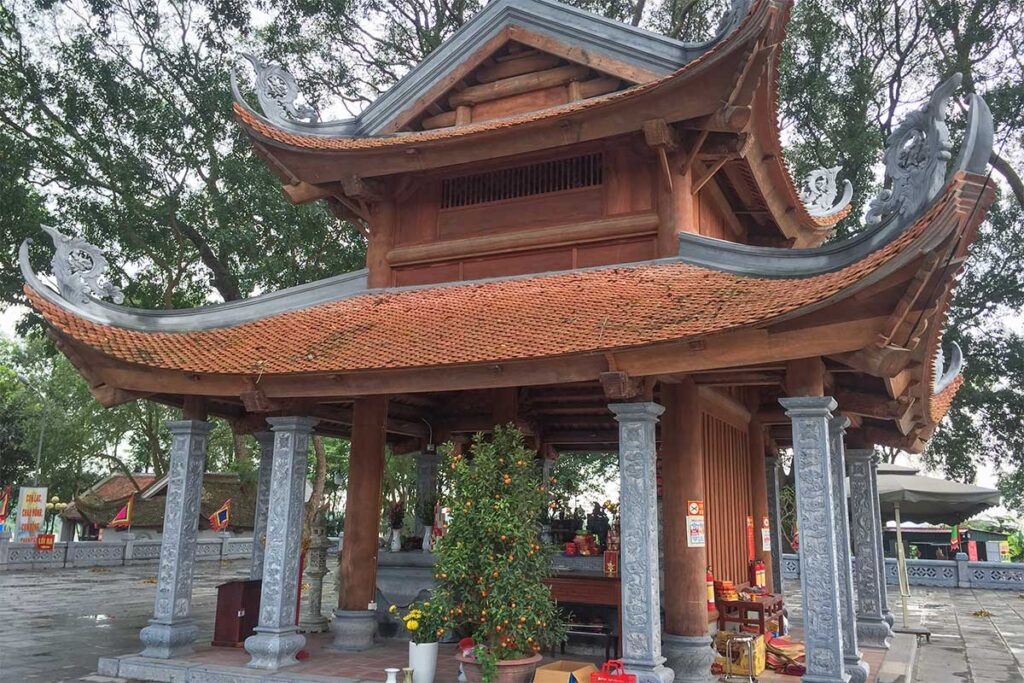Who was Kinh Duong Vuong?
Kinh Duong Vuong is a legendary figure often regarded as the first sovereign of the Vietnamese people, said to have ruled the ancient state of Xích Quỷ around 2879 BCE. According to Vietnamese mythology, he was the father of Lạc Long Quân, who later married Âu Cơ—the couple believed to have given birth to the hundred children who became the ancestors of the Vietnamese nation.
Stories about Kinh Duong Vuong are widely taught in Vietnamese schools, where he appears alongside other mythical heroes like Thánh Gióng and Sơn Tinh. His legend is deeply woven into national identity, though it is based more on oral tradition than verifiable history.
Some historical texts, such as the 15th-century Đại Việt sử ký toàn thư, trace his origins to Chinese mythology. They describe him as a descendant of Thần Nông (Shennong), a mythical emperor, and say he was granted the title Kinh Duong Vuong when sent to rule the southern lands. Whether seen as pure legend or symbolic ancestor, he remains an important cultural figure in Vietnam’s view of its ancient roots.
Kinh Duong Vuong Temple
Location and Setting
Kinh Duong Vuong Temple is located in A Lu village, Dai Dong Thanh commune, Bac Ninh Province—just over 30 km from Hanoi. It stands a short walk from the Kinh Duong Vuong Tomb, on the inland side of the Duong River dyke. The area is calm and semi-rural, with narrow village roads and a low-key, local atmosphere.
Layout and Dedications
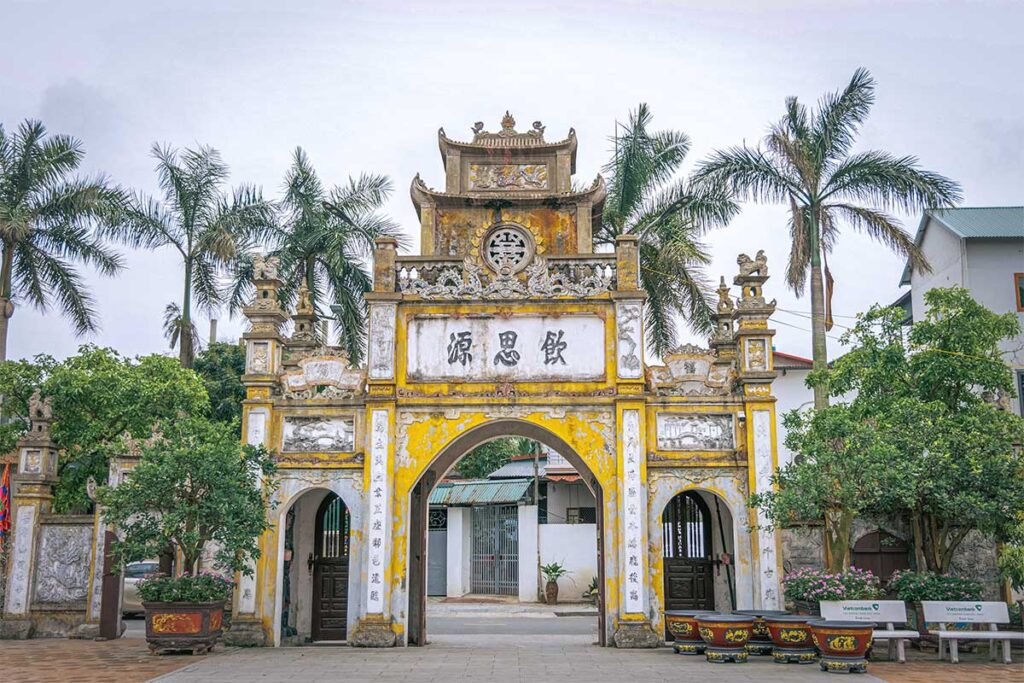
The temple follows a three-part layout typical of traditional Vietnamese architecture: a front hall, middle hall, and inner sanctuary. While the main altar is for Kinh Duong Vuong, the temple also includes altars to Lạc Long Quân and Âu Cơ, two mythological ancestors deeply rooted in Vietnam’s origin stories.
Architecture and Relics
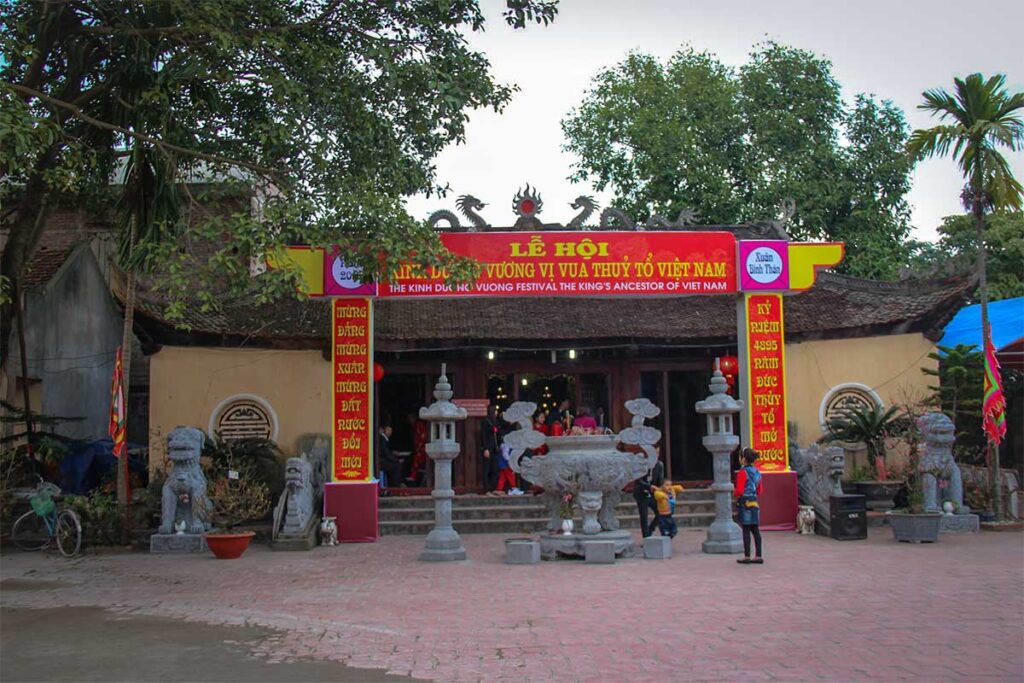
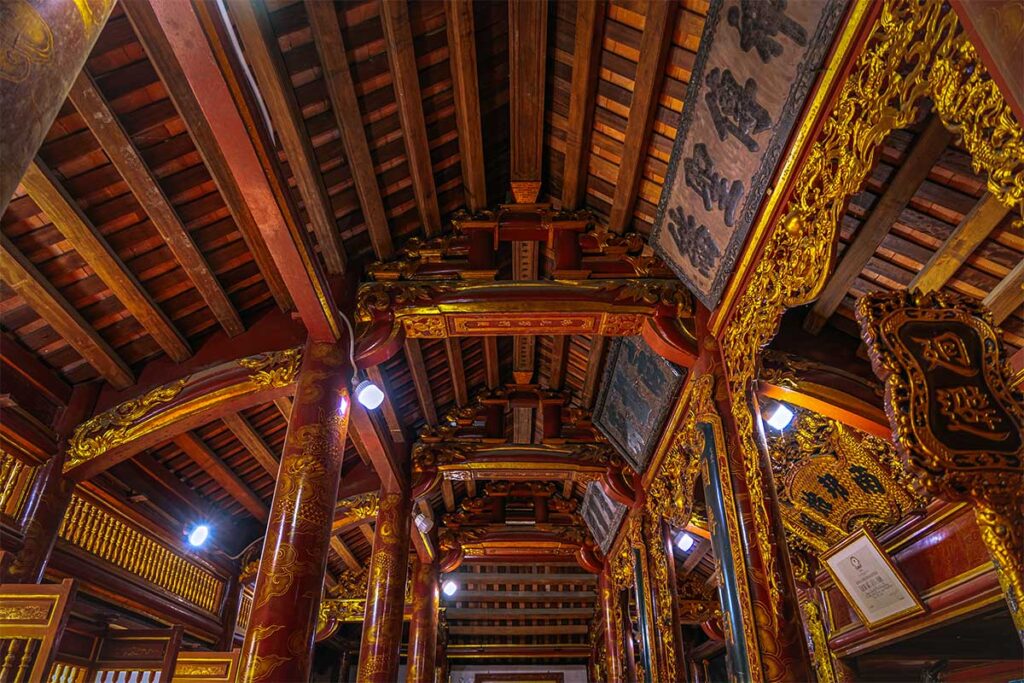
You’ll find tiled roofs, wooden beams, and decorative stone details that reflect Vietnam’s classic temple design. Inside, the temple preserves a number of important cultural items, including 15 royal decrees, stone tablets, and an engraved stele from 1840. These relics reinforce the temple’s symbolic importance through centuries of Vietnamese history.
Restoration History
The original worship hall in A Lu village was destroyed by French colonial forces in 1949. Locals rebuilt the temple on its current site in 1959, with another significant restoration completed in 2000. Though modest in size, the temple stands as a well-preserved cultural landmark rooted in local community efforts and ancestral reverence.
Kinh Duong Vuong Tomb
Location and Setting
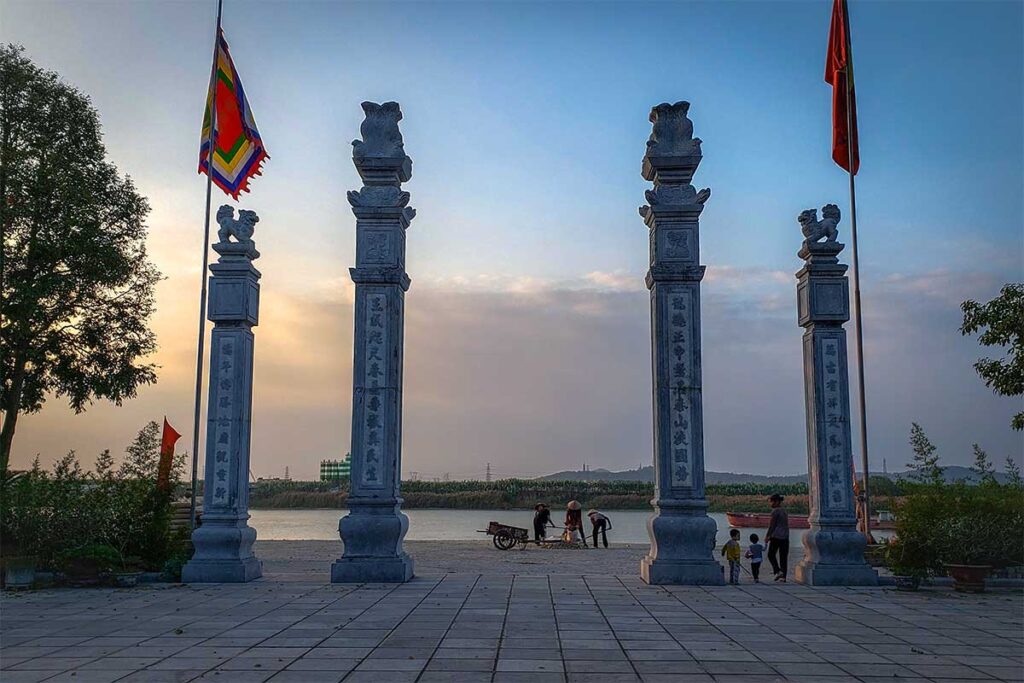
The tomb of Kinh Duong Vuong lies about 350 meters from the temple, just outside A Lu village on the river-facing side of the dyke. It sits on a slightly elevated mound, overlooking the Duong River, surrounded by tall casuarina trees that give the area a quiet, solemn atmosphere.
Architectural Features
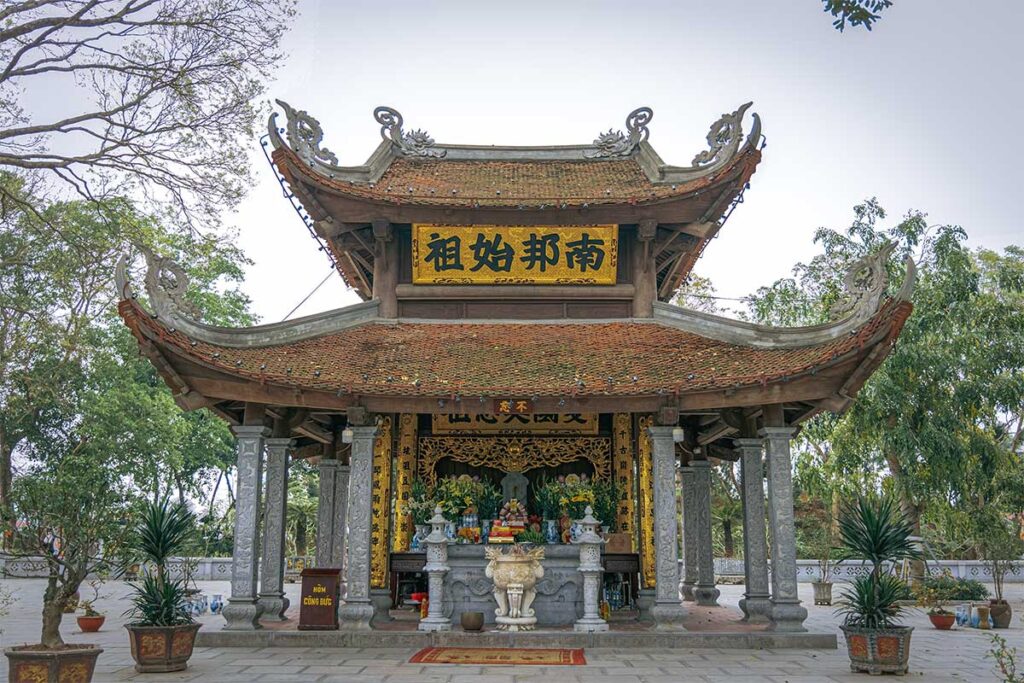
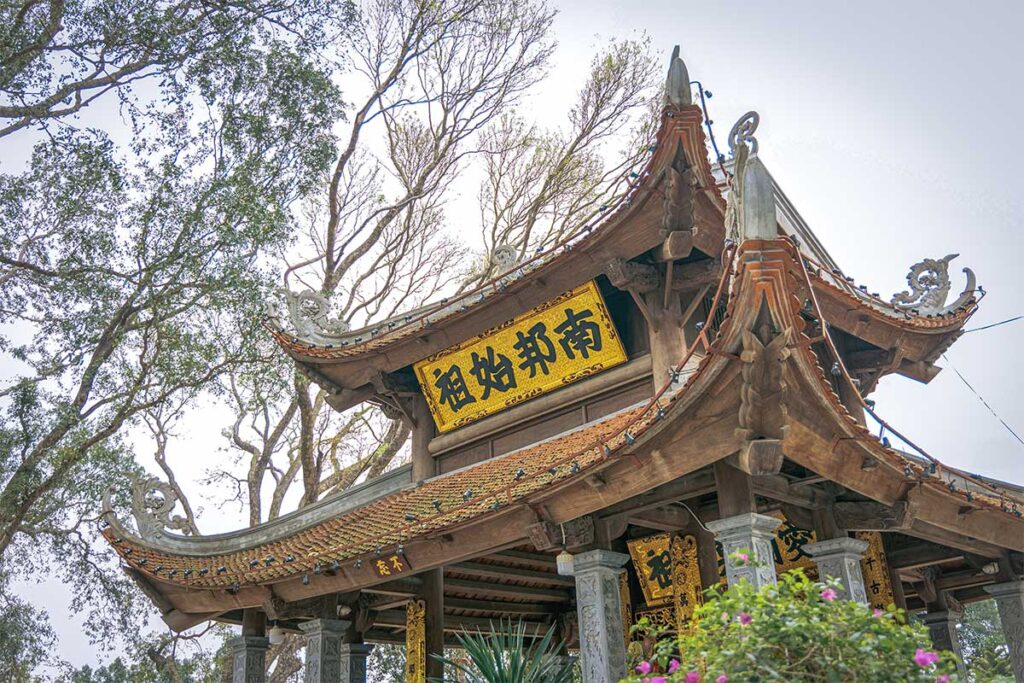
The tomb complex is built in a traditional style with a raised platform, an altar area, and a central memorial. The structure features eight double-tiered tiled roofs and a stone stele engraved in 1840 bearing the inscription “Lăng Kinh Dương Vương” (Kinh Duong Vuong Mausoleum). It’s a simple but respectful design, meant more for reverence than grandeur.
Symbolic Elements
At the entrance stands a stone slab inscribed with the characters “Hạ Mã”, meaning “Dismount Here.” In Vietnamese tradition, this signals respect—visitors were once expected to dismount their horses at this point when approaching the tomb. You’ll also find several smaller structures nearby for ceremonial and administrative functions.
Restoration History
Like the temple, the tomb suffered significant damage during the colonial era, especially in the 1949–1952 period. It was restored by local villagers in 1971, with another round of renovations and expansions completed in 2013. Despite these efforts, the site remains relatively modest in appearance.
Realistic Impressions
While the history and symbolism are significant, the physical site may feel underwhelming—especially if you’ve seen major temples or mausoleums in Hanoi.
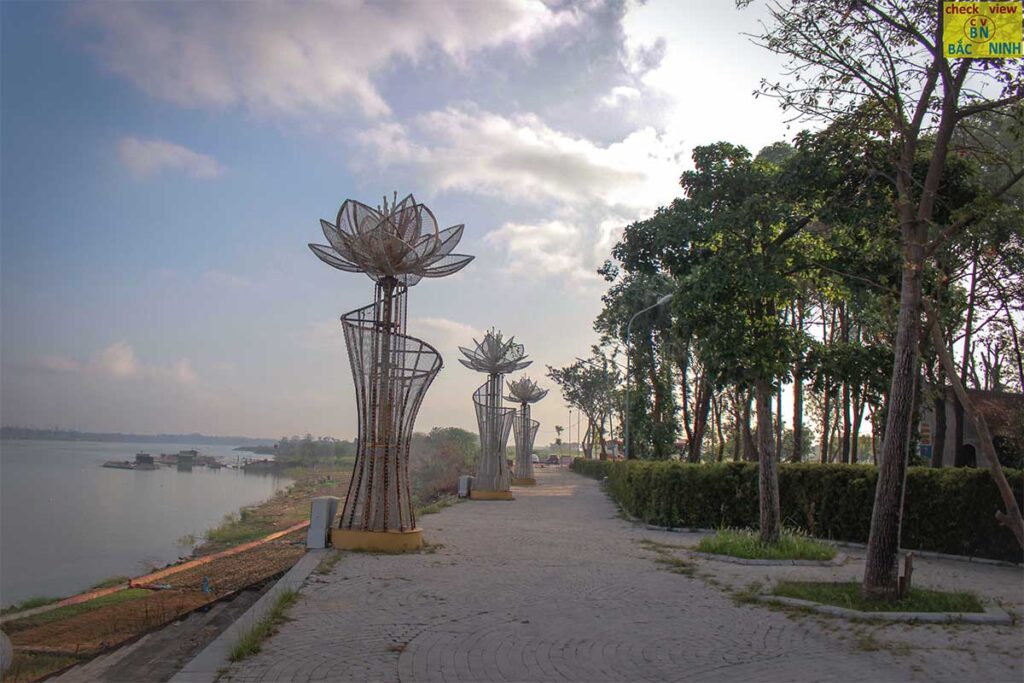
The river is close by, but the view is not especially scenic, and there are no developed riverfront features to enjoy. Still, for those interested in Vietnam’s mythical roots, the tomb holds cultural value and pairs well with other local stops in the area.
Kinh Duong Vuong Festival
The Kinh Duong Vuong Festival takes place each year from the 16th to the 18th day of the first lunar month, which usually falls in February or early March. It’s held at the temple and tomb site in A Lu village to honor Vietnam’s legendary founding ancestor.
The festival features traditional rituals, offerings, and communal prayers led by local elders and officials. There are also cultural performances, including folk music and ceremonial processions, reflecting the village’s pride in its historical role.
For local residents and Vietnamese pilgrims, the festival is a chance to show respect for ancestral roots, celebrate national unity, and pass down traditions to younger generations. It’s one of several festivals in northern Vietnam that honor mythical founders like Lạc Long Quân and Âu Cơ.
This is a small-scale, authentic village event—not a major tourist festival. There are no big crowds or elaborate stages, and no signage in English.
Location and How to Get There
Where are the temple and tomb?
Both the temple and tomb are situated in A Lu village, Dai Dong Thanh commune, Thuan Thanh district, Bac Ninh Province—about 32–35 km east of Hanoi, which translates to roughly 1 hour by car under normal traffic.
Getting there from Hanoi
Car with driver
The most practical option for most foreign travelers is to book a private car with driver. This gives you full control over your schedule and allows you to easily combine the visit with nearby cultural sites like Dong Ho Village, But Thap Pagoda, or Dau Pagoda.
Driving motorbike
For experienced travelers comfortable with Vietnam’s traffic, riding a motorbike is also possible. The route follows provincial roads through small towns and countryside. It’s not particularly scenic, but it’s manageable and well-connected. This option is best for those who are already familiar with riding in Vietnam and have the correct license and insurance.
Tips for visiting
- Dress modestly: There’s no strict dress code, but it’s a place of worship, so respectful attire is expected.
- Hire a local guide: The site is small and can feel plain without context. A guide adds historical depth and storytelling.
- Prepare for limited English signage: Most information is in Vietnamese; a guide or translation app can help.
Are the Kinh Duong Vuong Temple and Tomb worth visiting?
As a standalone destination, no—this site doesn’t justify the one-hour trip from Hanoi. The temple and tomb are modest in both size and design, and you’ll find far more impressive historical sites right in the city.
That said, if you’ve already seen Hanoi’s main highlights and want to explore more off-the-beaten-track places, this area can be worth including. The temple and tomb hold cultural and symbolic value, especially if you’re interested in Vietnam’s mythical origins.
The visit makes the most sense when combined with other nearby sites like Dong Ho Painting Village, But Thap Pagoda, and Dau Pagoda. Together, they give a fuller experience of rural heritage, folk traditions, and religious architecture in Bac Ninh. In that context, the Kinh Duong Vuong site adds an interesting historical layer—even if it’s not a major highlight on its own.
